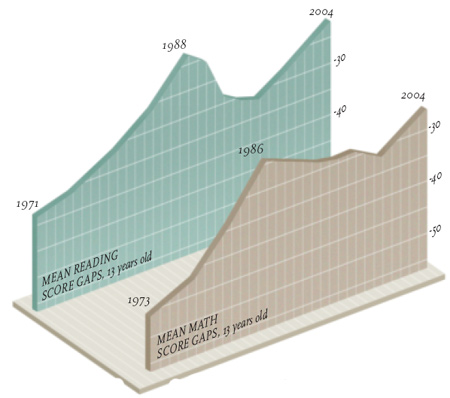|
||
      |
Fig.1
Unabridged gap
The national disparity in academic achievement between black and white students—calculated in test scores, graduation rates, and years of schooling—narrowed sharply for much of the 20th century, especially following the civil-rights movement. But in the past 15 years, that “skill gap” has remained ominously wide, according to a study by Chicago economist Derek Neal, who published his findings this fall in the Handbook of Economics of Education. As white test scores made modest gains and black scores remained unchanged, some black students, Neal reports, fell even farther behind their white peers.
Wages have followed suit. In 1980 black families earned 68 percent as much as white families; in 2000 that number was down to 56 percent. Without dramatic improvements in African American education, Neal warns, the black-white skill gap is likely to persist for much of the 21st century.
